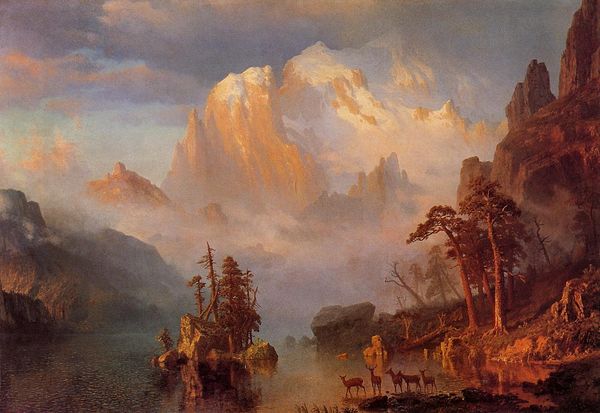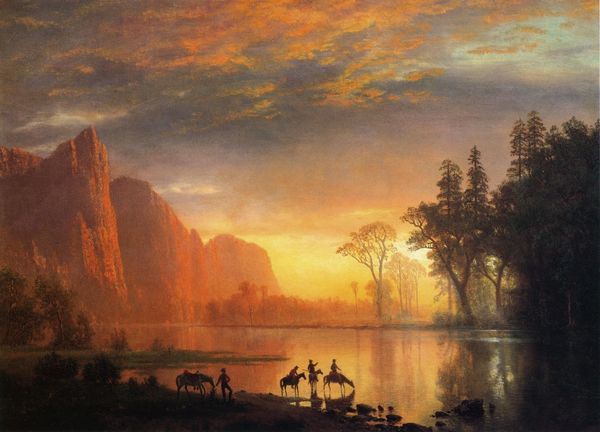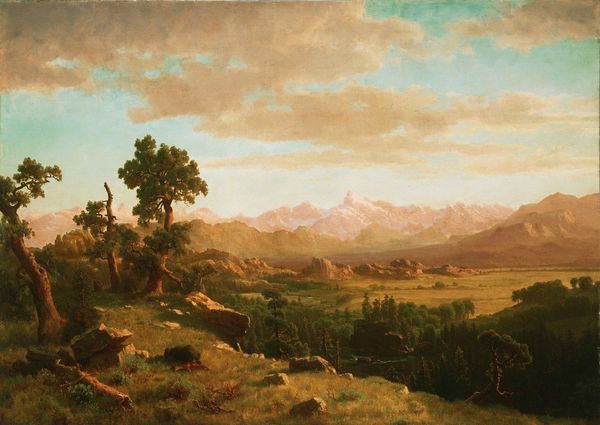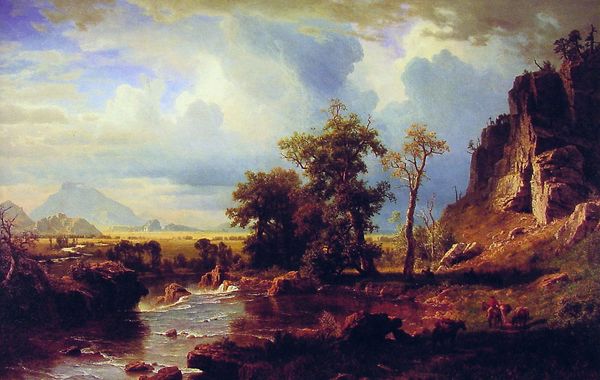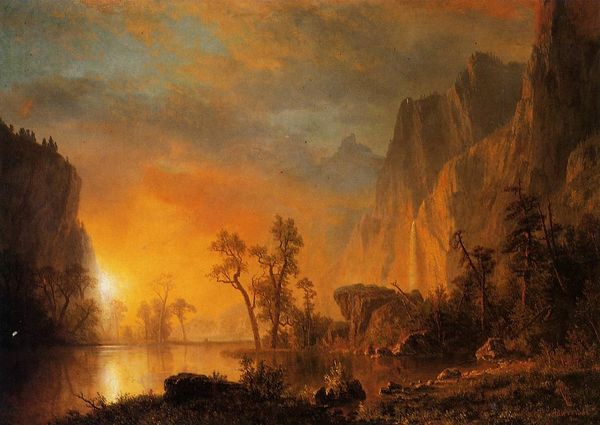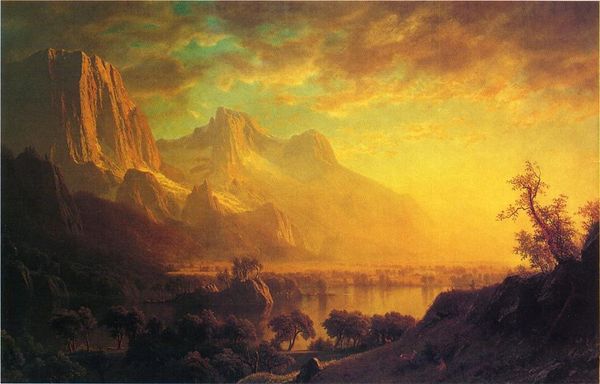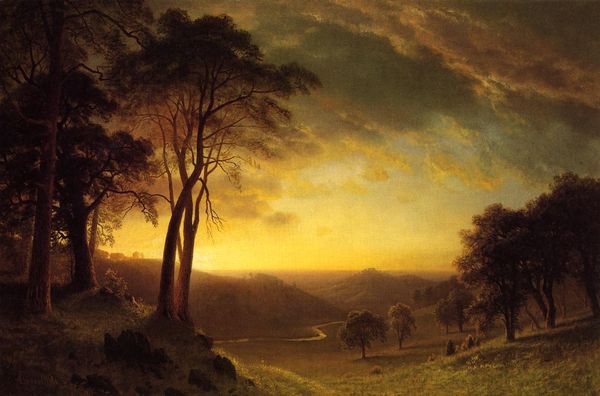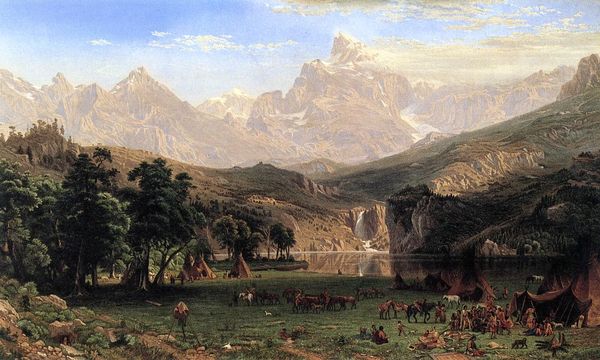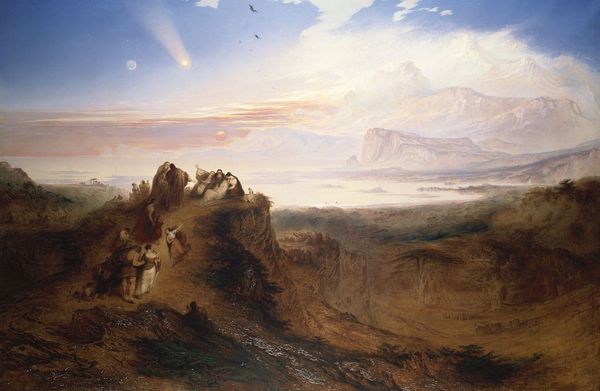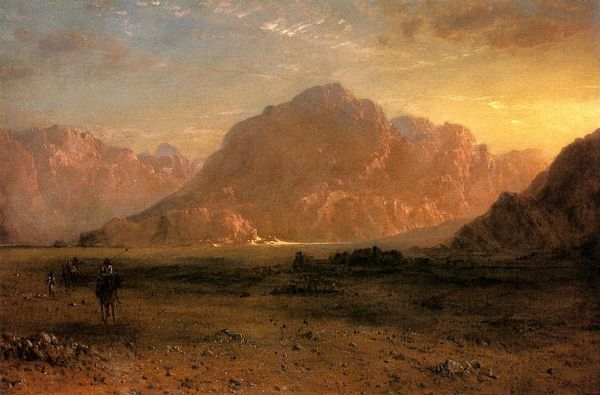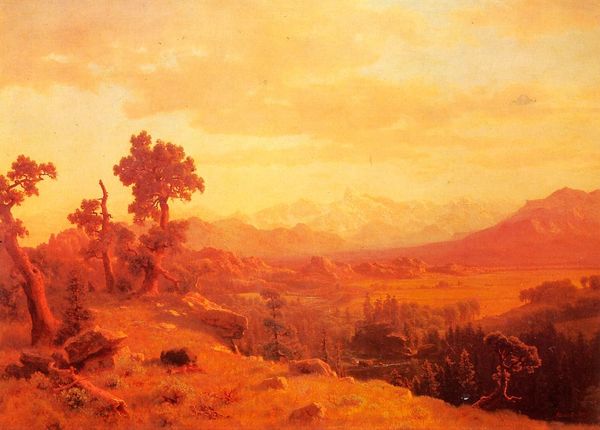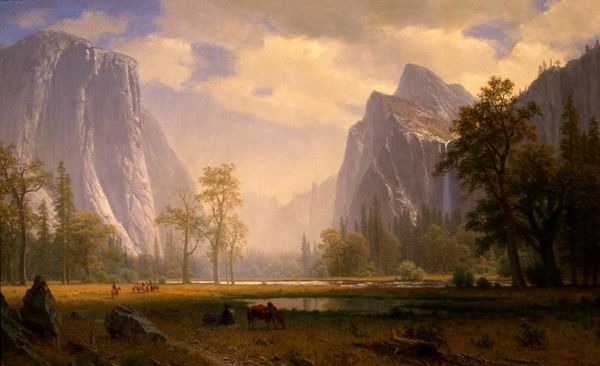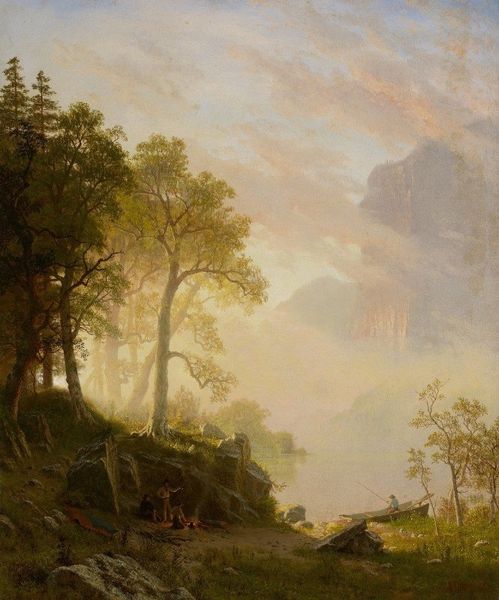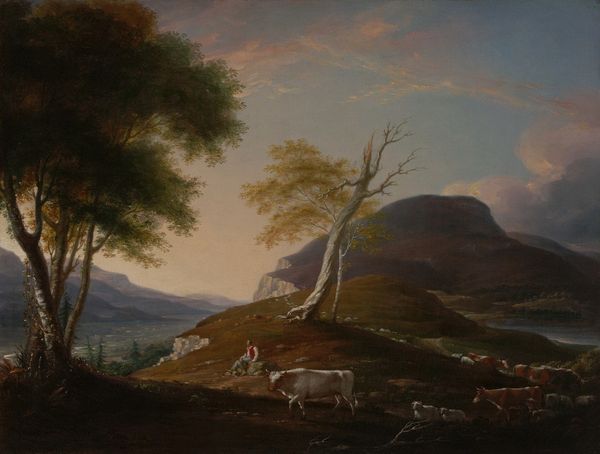
Dimensions: 78.7 x 124.5 cm
Copyright: Public domain
Curator: Looking at Albert Bierstadt's "The Oregon Trail," painted in 1869 with oils, the initial impression for me is of epic storytelling in visual form. What captures you right away? Editor: The golden light. It bathes the landscape in this hopeful, almost biblical glow. Like, these travelers are searching for the promised land, you know? A second Eden waiting to be claimed, painted at a time where the cost of expansion wasn’t yet as clear in the popular imagination. Curator: Precisely. That light is quintessential Bierstadt, mirroring his use of dramatic light effects to highlight the sublime grandeur of the American West. Consider the symbols: The covered wagons, the cattle, the rugged mountainscape—all these icons represent Manifest Destiny, this cultural imperative, a belief that expansion was both justified and inevitable. Editor: It’s so deliberate, this painting. The sharp rocks jut upwards like grasping claws and become this natural barricade juxtaposed to the golden glow – yet both have an irresistible siren song about them that seem almost mythical now. We now look back knowing the reality clashed severely with this utopian imagery, which of course, adds a really powerful layer. Curator: Exactly. Bierstadt was part of the Hudson River School. A grand statement intended to shape perceptions of the West during a crucial period of westward expansion. Each figure, almost small and secondary beneath the sun's majesty, evokes themes that explore what it means to find hope in expansion and what to sacrifice to obtain that ideal. Editor: He idealizes not only the landscape but also this journey—the shared mission almost supersedes individual sacrifice in an act of American myth-making. There's an echo of classic biblical exodus stories in all that moving along into this almost holy light, which, given what was left in their wake is an intensely painful contradiction. It almost feels that we, viewing it now, become witnesses or participants in these loaded cultural narratives of American progress. Curator: Absolutely. Looking back from our current moment, there is indeed this double exposure to the painting that shifts its meanings into these fascinating historical perspectives. Editor: It feels both a visual poem and a cautionary tale about nationhood and its intertwined legacies.
Comments
No comments
Be the first to comment and join the conversation on the ultimate creative platform.
